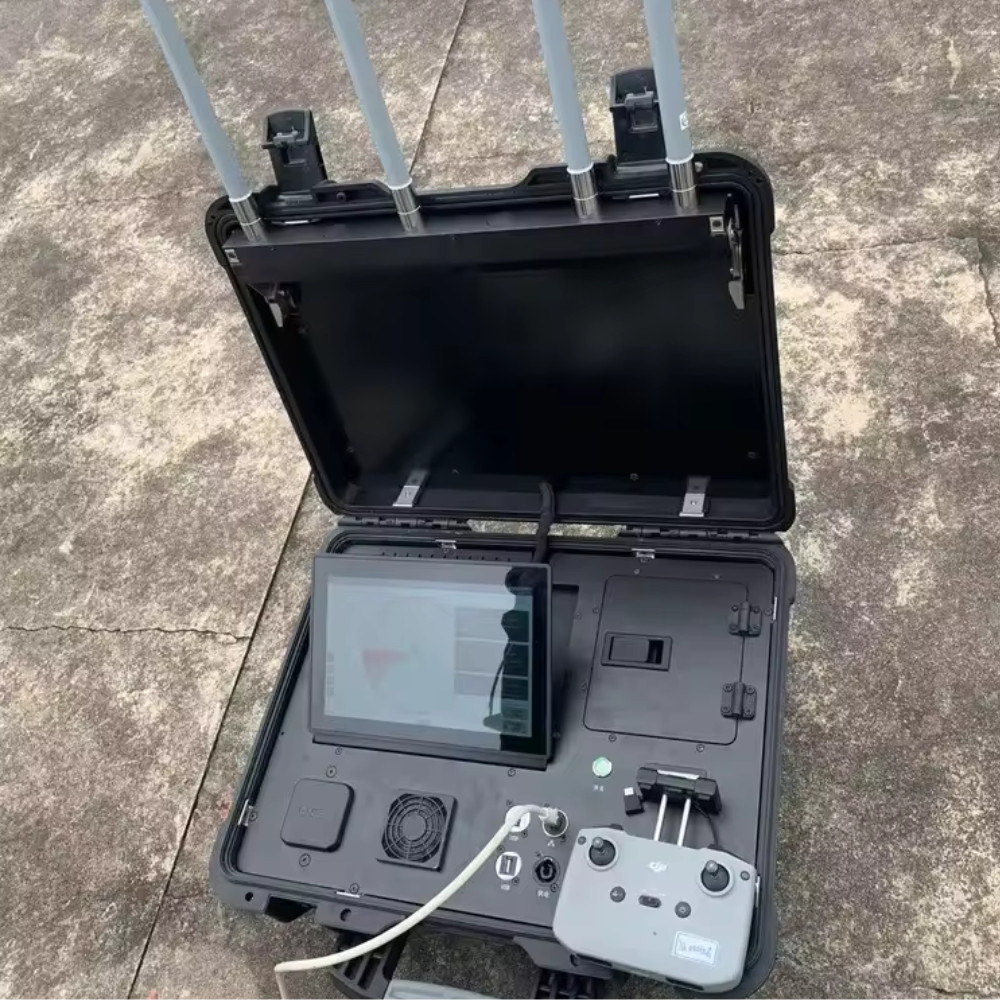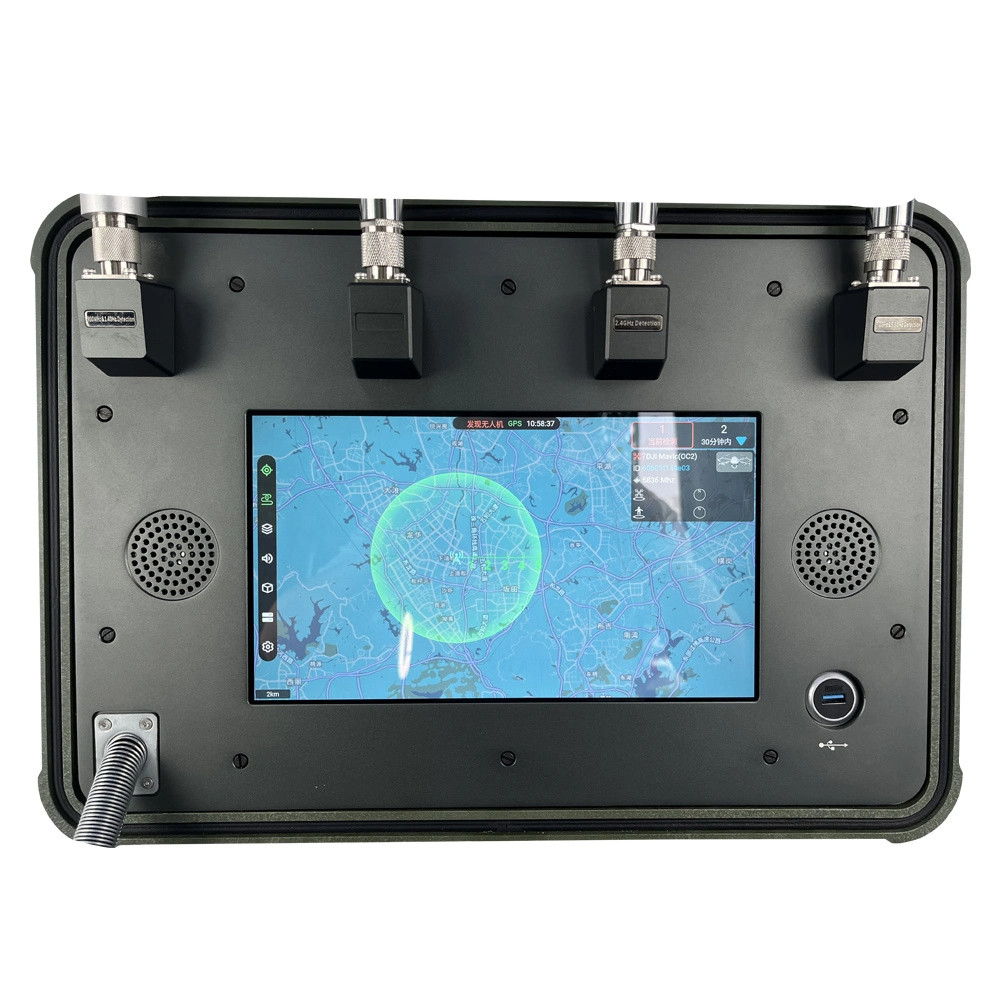Vehicle In-Car Full Frequency Band Detector Handheld Portable Drone
Detector Detection For Drone Detection At The Border
Product Overview
The EXLZ-TCX1 Portable UAV Detection and Positioning System uses
advanced cognitive radio protocols (CRPC) and message-level
protocol analysis technology to detect, identify, and track
civilian drones. This system provides real-time location and
trajectory tracking, making it ideal for airports, prisons,
industrial facilities, national defense, public security, and major
event venues.
Technical Specifications
| Environmental and Physical Parameters | Value |
|---|
| Operating Temperature | -20°C to +65°C |
| Humidity | Relative Humidity (RH) 93±3% |
| Atmospheric Pressure | 86kPa - 106kPa |
| Total Power Consumption | ≤50W |
| Power Supply | Main power or built-in power supply |
| Rated Voltage | 220V±22V AC 50Hz/60Hz |
| Built-in Power Supply | DC 12V 54AH |
| Dimensions | 470mm x 357mm x 176mm |
| Weight | 12KG |
| Protection Level | IP66 |
| Continuous Operation Time | 10 hours standby after fully charged, continuous operation with
mains power |
| Radio Characteristics | Value |
|---|
| Supported Frequency Bands | 900MHz, 1.4GHz, 2.4GHz, 5.2GHz, 5.8GHz |
| Detection Airspace | 360° full airspace |
| Detection Distance | >3km (optional 5km/10km depending on environment) |
| Environmental Electromagnetic Wave Radiation Intensity | Meets GB8702-2014 requirements |
| Reconnaissance Mode | Panoramic scan, channel scan |


Main Features
- Passive Detection: Detects signals without emitting any, identifying drone models and
electronic ID fingerprints.
- Accurate Identification: Distinguishes between different drones of the same brand, model,
and frequency band.
- Precise Positioning: Indicates UAV target positions accurately.
- Blacklist/Whitelist Management: Supports one-click marking of black and white lists.
- Detection Coverage: Supports DJI and other mainstream brands, covering over 98% of
market models.
- Multi-Target Tracking: Tracks multiple drones simultaneously, displaying flight
trajectories in different colors.
- Intrusion Alarm: Issues audible and visual alarms upon detecting drone intrusion.
- Pilot Positioning: Determines the location of the drone operator.
- Intelligent Platform: Equipped with a professional display and command system, supporting
both unattended and manual modes.
Accessories List
- Device Host: 1 unit, used for radio signal processing and command
platform system display
- Radio Receiving Antenna: 1 unit, rod-shaped, for radio signal
reception
- Power Cable: 1 unit, for device power connection
- 2-meter Waterproof Network Cable: 1 unit, for connecting the
processing unit to external display devices
- Power Adapter: 1 unit, for charging the internal battery of the
device
- Accessories Packaging Box: 1 unit, for accessories and equipment
transportation
Usage Instructions
Device Deployment and Usage
1. Choose a Suitable Environment: Select an open outdoor area, typically high ground or a building
rooftop.
2. Antenna Connection: Connect the receiving frequency band antennas to the corresponding
interfaces on the radio processing unit.
3. Power and Network Connection:
- Network Connection: Use optical fiber or standard network cable to connect the radio
processing unit to the host terminal via TCP/IP interface; or
connect to a wireless network or 4G network.
- Power Connection: The device has a built-in battery for direct power; 220V AC input
can be connected via fixed power supply or UPS power supply.
System Operation
1. Start the System: After powering on, the display interface automatically starts the
UAV defense system and enters the main interface.
2. Passive Detection: The system automatically alarms upon detecting a UAV, displaying
frequency band information and approximate location.
3. Full Frequency Scanning: Enables full frequency signal scanning detection for DIY UAV
signals within 70MHz-6000MHz range.
4. Whitelist Setup: Add detected UAVs to the whitelist through the menu.
5. View Historical Events: View UAV historical event list, including discovery time, duration,
model, and identification code.
6. View Statistical Reports: View UAV incident statistics, including the number of UAVs
discovered, common aircraft models, and invasion times.
7. AI Learning: Intelligent recognition learning for unknown UAVs.
8. View Device Status: Monitor the status of controllers, computing engines, and sensors
through device management.


